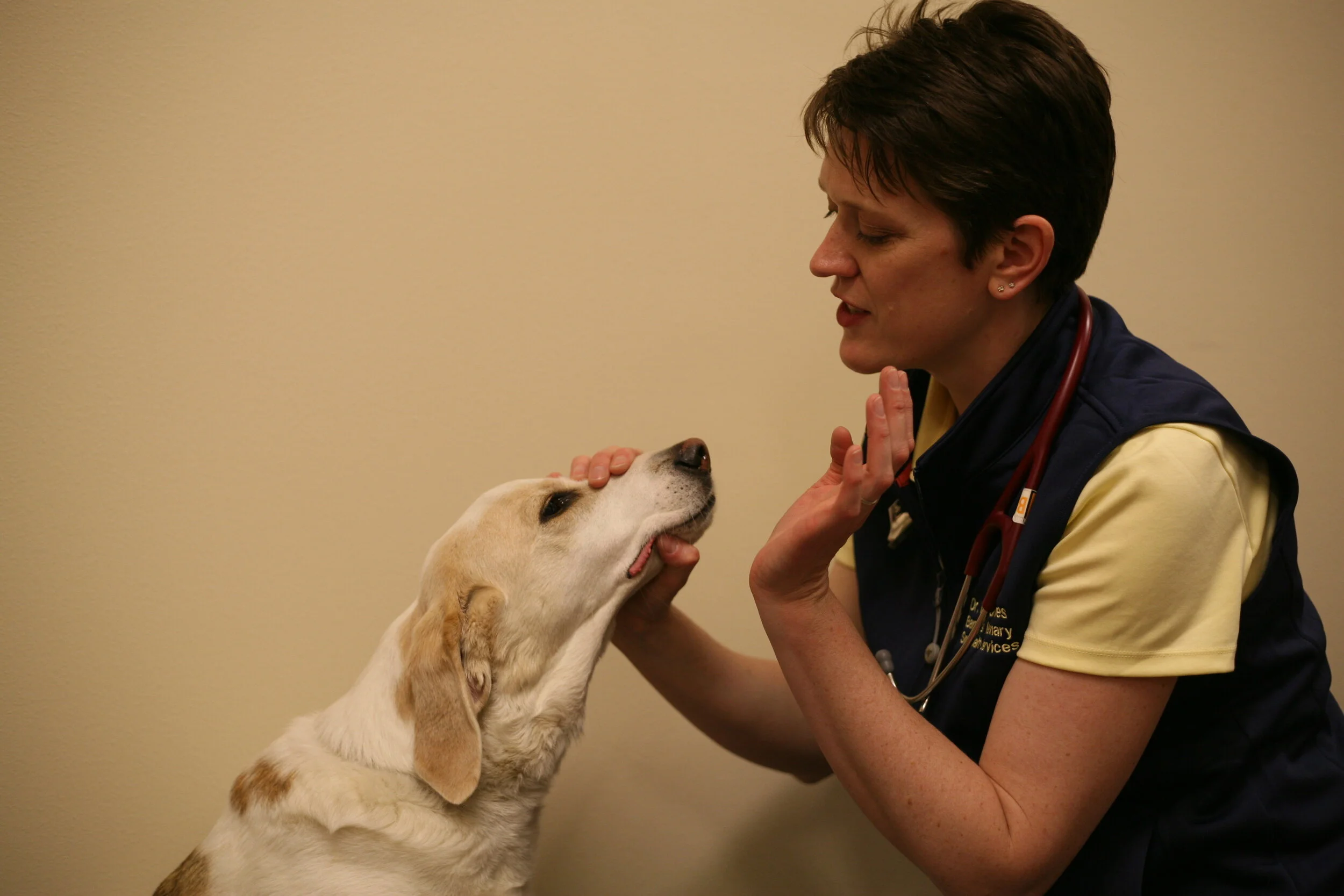Here is the case: A 5 year old cat that cannot blink one eye. What cranial nerve is affected?
To answer this question, of course you must do a cranial nerve exam. At its most basic level, it is a process of elimination. If you touch the medial and lateral canthus and the cat does not blink what cranial nerves are you testing? (CN 5 and CN 7)
How can you isolate these two nerves from each other to see which is the affected nerve? If you do corneal reflex you're testing CN 5 (sensory) and 6 (motor). Voila! So, if the cat does not blink when you touch the medial or lateral canthus, but DOES retract the globe when you do corneal reflex which nerve is affected? Think you know... scroll (or read!) to the bottom to see the answer.
Need a little refresher on the cranial nerves and their jobs? The table below has all nerves, and their main jobs, for quick easy reference.
Cranial nerveFunctionNeurologic examination CN I: OlfactorySmellWatch the dog sniff, ask about eating habits. * Difficult to objectively evaluateCN II: OpticSightMenace, PLR, Cotton ball test, trackingCN III: OculomotorSomatic: eye movement.
Innervates all extraocular muscles except lateral rectus and dorsal obliqueAutonomic: Parasympathetic function to the pupilPhysiologic nystagmus (medial movement), Strabismus (if present this indicates an abnormalities of CN)
PLRCN IV: TrochlearEye positionStrabismusCN V: Trigeminal
Ophthalmic
Maxillary
Mandibular
Sensory to the face, cornea
Close the jaw (muscles of mastication)Sensory: Corneal reflex, blink reflex, sensory assessment of the nares and lips
Motor: ability to CLOSE the jawCN VI: AbducentSomatic eye movementPhysiologic nystagmus (lateral movement), StrabismusCN VII: FacialSomatic: muscles of facial expression
Autonomic: parasympathetic innervation to the lacrimal gland, 3rd eyelid gland, palatine and nasal glands, taste rostral tongueMenace, blink reflex, lip and ear twitchCN VIII: vestibulocochlearSensory: balance and hearing
Innervates: vestibulospinal tracts, MLF (eye movement), reticular formation, cerebrum and cerebellumPhysiologic nystagmus, pathologic nystagmus, positional strabismus, head position (tilt), ataxia, hearing test (BAER)CN IX: GlossopharyngealSensory to pharynx
Motor to pharynx
Autonomic: parasympathetic function – taste from the caudal tongueGag reflexCN X: VagusMotor to pharynx
Parasympathetic: taste to pharynx, larynx, heart rate, GI motility, otherGag reflex
CN XI: Spinal accessoryMotor: trapezius, sternocephalicus, brachiocephalicusPalpation of associated musclesCN XII: HypoglossalMotor: tongueMove tongue left and right, visually assess for symmetry and movement.
Answer: Cranial nerve 7 is affected. (5 is normal in corneal reflex therefore it is not the problem in the blink reflex either.)
Thanks for reading and have a great week!
Do you have a case that is puzzling you? Please reach out - I'd love to help. Did you know I also do onsite or virtual private CE for hospitals? Reach out for more details, if you're interested.




